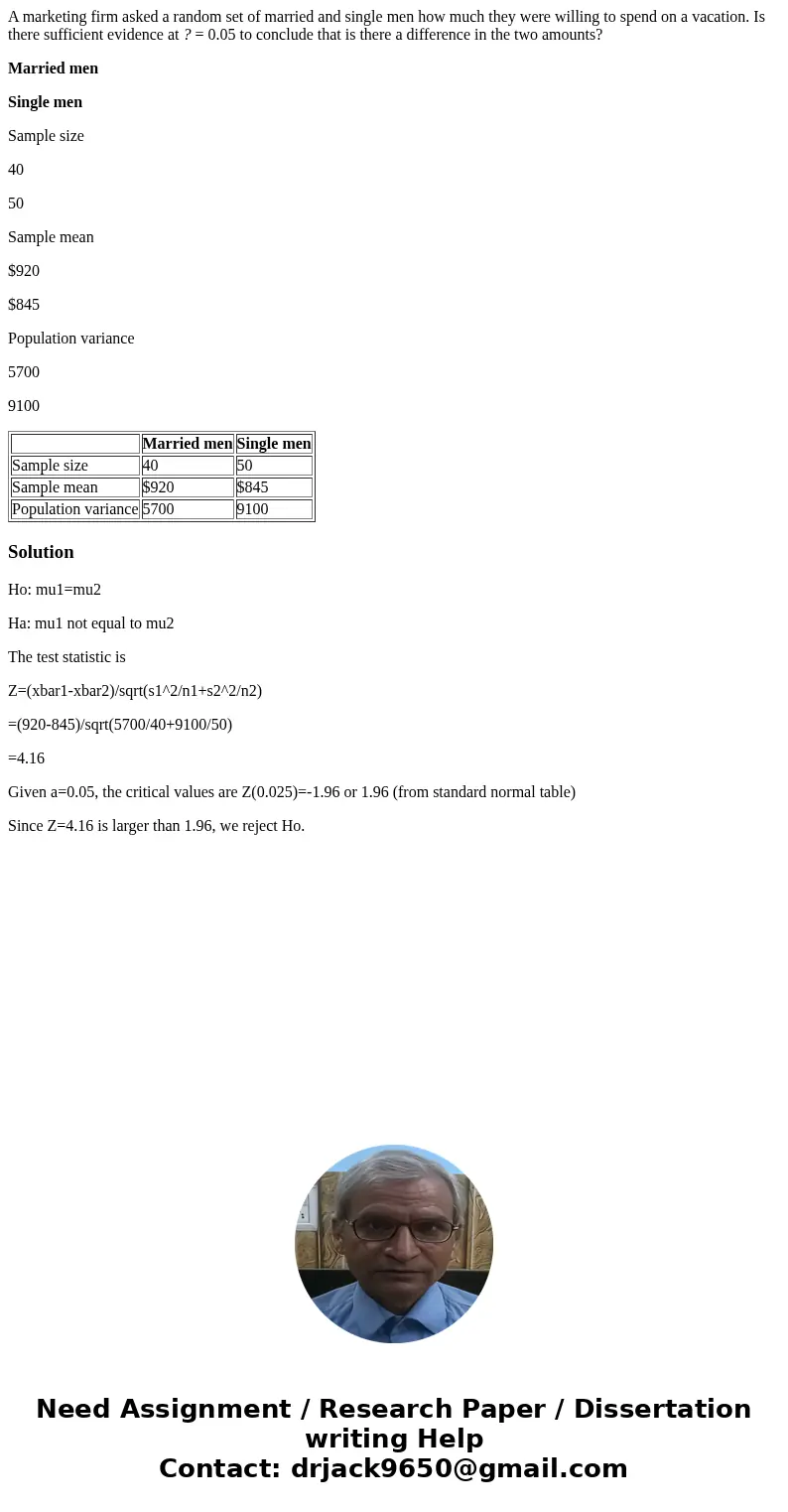A marketing firm asked a random set of married and single me
A marketing firm asked a random set of married and single men how much they were willing to spend on a vacation. Is there sufficient evidence at ? = 0.05 to conclude that is there a difference in the two amounts?
Married men
Single men
Sample size
40
50
Sample mean
$920
$845
Population variance
5700
9100
| Married men | Single men | |
| Sample size | 40 | 50 |
| Sample mean | $920 | $845 |
| Population variance | 5700 | 9100 |
Solution
Ho: mu1=mu2
Ha: mu1 not equal to mu2
The test statistic is
Z=(xbar1-xbar2)/sqrt(s1^2/n1+s2^2/n2)
=(920-845)/sqrt(5700/40+9100/50)
=4.16
Given a=0.05, the critical values are Z(0.025)=-1.96 or 1.96 (from standard normal table)
Since Z=4.16 is larger than 1.96, we reject Ho.

 Homework Sourse
Homework Sourse